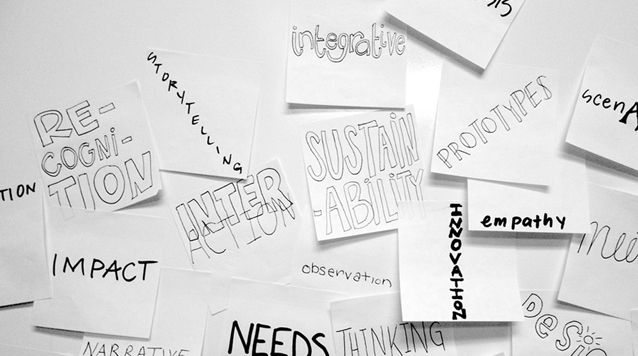
In his book, Gamestorming, Dave Gray along with co-authors Sunni Brown and James Macanufo share more than 80 games to help you break down barriers, communicate better, and generate new ideas, insights, and strategies. They have identified tools and techniques from some of the world’s most innovative professionals, whose teams collaborate and make great things happen. This book is the result: a unique collection of games that encourage engagement and creativity while bringing more structure and clarity to the workplace.
One of the very quick (20 minutes or less) and incredibly helpful games included in the book is creating an Empathy Map as a tool for Design Thinking.
The goal of the game is to gain a deeper level of understanding of a stakeholder in your business ecosystem, which may be a client, prospect, partner, etc., within a given context, such as a buying decision or an experience using a product or service.
Here’s how it can go:
1. Start by drawing a circle to represent the person and give the circle a name and some identifying information such as a job title. It helps if you can think of a real person who roughly fits the profile, so you can keep them in mind as you proceed. In keeping with the idea of a “profile” think of the circle as the profile of a person’s head and fill in some details. You might want to add eyes, mouth, nose, ears, and maybe glasses if appropriate or a hairstyle to differentiate the person from other profiles you might want to create. These simple details are not a frivolous addition — they will help you project yourself into the experience of that person, which is the point of the exercise.
2. Determine a question you have for that stakeholder. If you had a question you would want to ask them, or a situation in their life you want to understand, what would that be? You might want to understand a certain kind of buying decision, for example, in which case your question might be “Why should I buy X?”
3. Divide the circle into sections that represent aspects of that person’s sensory experience. What are they thinking, feeling, saying, doing, hearing? Label the appropriate sections on the image.
4. Now it’s time for you to practice the “empathy” portion of the exercise. As best you can, try to project yourself into that person’s experience and understand the context you want to explore. Then start to fill in the diagram with real, tangible, sensory experiences. If you are filling in the “hearing” section, for example, try to think of what the person might hear, and how they would hear it. In the “saying” section, try to write their thoughts as they would express them. Don’t put your words into their mouth — the point is to truly understand and empathize with their situation so you can design a better product, service or whatever.
5. Check yourself: Ask others to review your map, make suggestions, and add details or context. The more the person can identify with the actual stakeholder the better. Over time you will hone your ability to understand and empathize with others in your business ecosystem, which will help you improve your relationships and your results.
Mariposa Leadership is very excited to welcome Gamestorming author Dave Gray to this month’s Wise Talk where he and Sue Bethanis will discuss the innovative alternative to brainstorming – gamestorming! They will also have a chance to discuss Dave’s new book about how to keep your business on the leading edge, The Connected Company.
Sign up for Wise Talk and join the conversation on Tuesday, October 23rd from 2-3pm PT!
MORE








